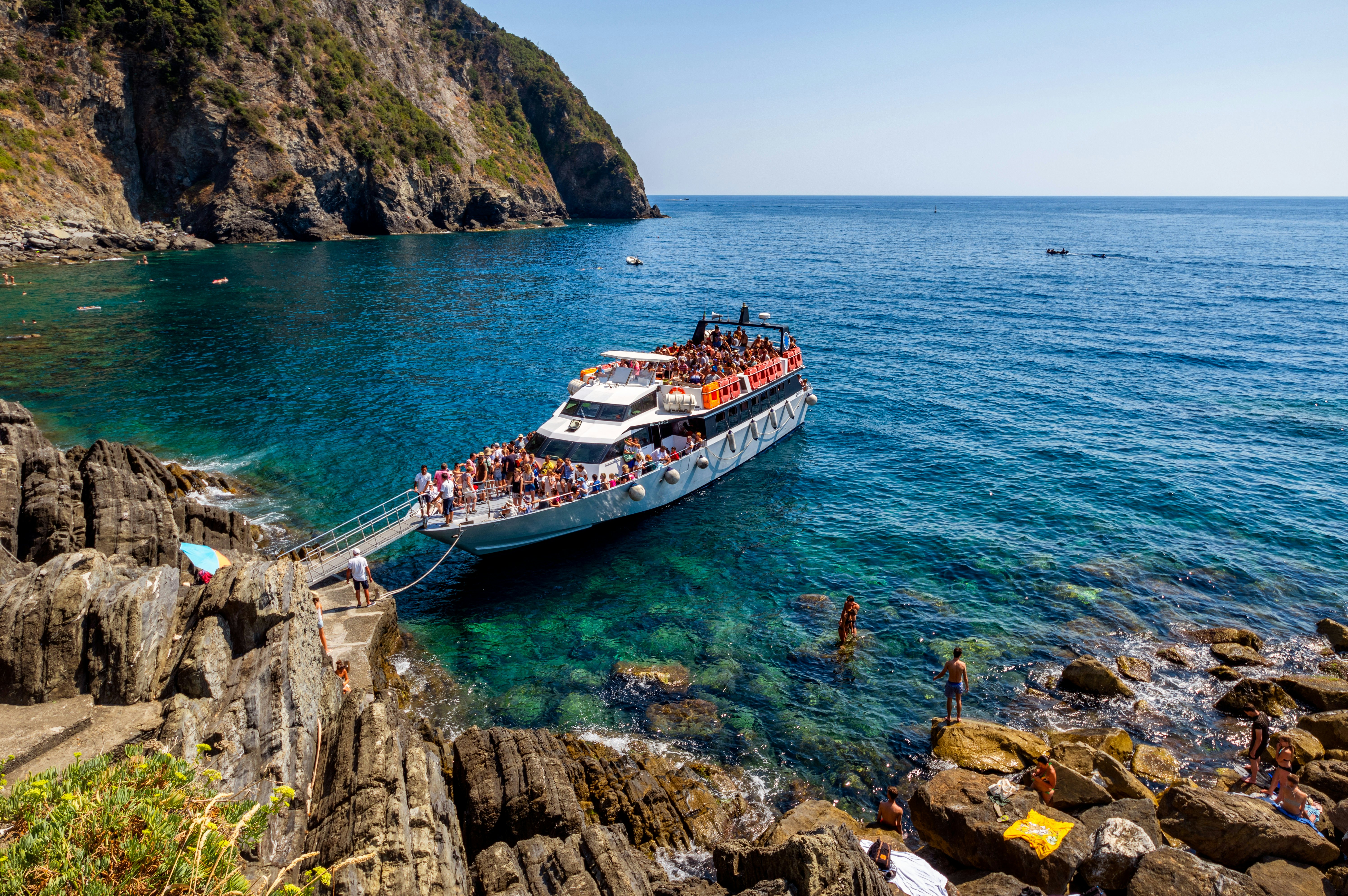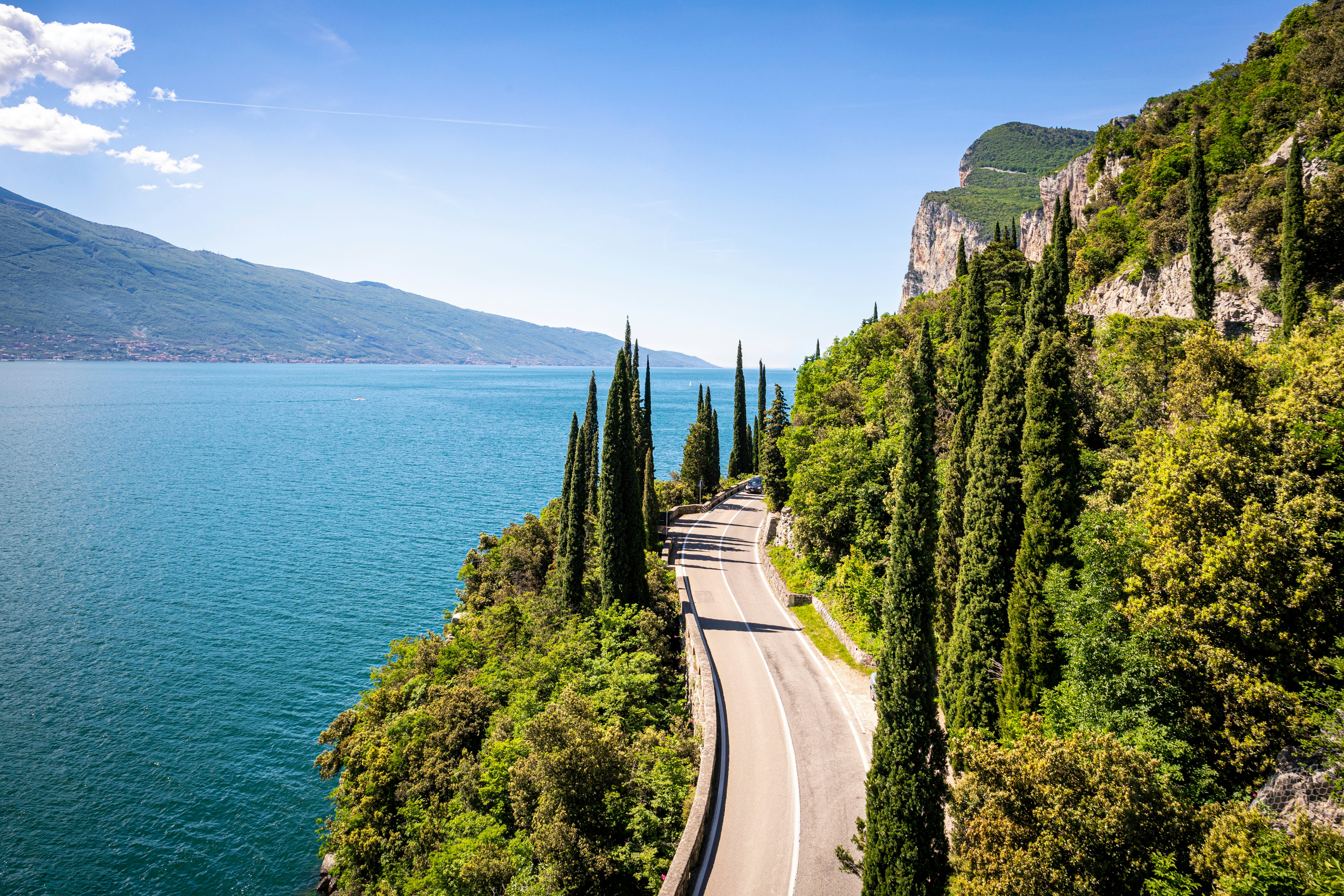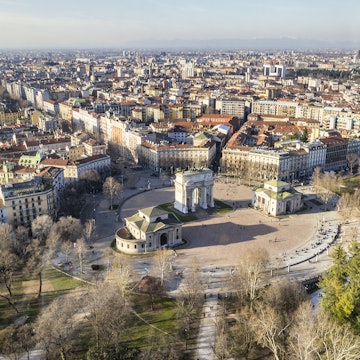
Getting around Italy: from car rentals to trams and buying train tickets at the cheapest prices



Italian cities like Milan (pictured) are well connected by public transport. Shutterstock
Italy has more must-see sights than you could squeeze into a lifetime. From the exceptionally well-preserved Roman ruins of the capital to the blissful Mediterranean landscapes of Sicily and Sardinia, roaming around the boot-shaped peninsula is a journey of discovery that never fails to astonish.
With so much to see and do, it’s only natural to think that Italy must have set up an optimally functioning public transportation system to make roaming around easy for the millions of visitors that travel to the country each year. Think again. While major hotspots are well-connected, getting off the beaten track can be tricky without your own vehicle and some thoughtful planning.
With this article, we’ll guide you through all there is to know about Italian wandering, from navigating the twisting roads of the rural countryside to booking a high-speed train ticket at the cheapest price. Whether you have your heart set on touring Tuscany, time-traveling in Rome or eating your way around Emilia-Romagna, here's what you need to know about touring Italy independently.
Italy without a car: understanding the public transportation system
Ranging from snow-capped Alpine peaks surpassing 4000m (13,123ft) in altitude to wild Mediterranean archipelagos, the country's diverse geography means leaning on more than one mode of transportation to get around. Expect to use trains, buses, ships and ferries to get where you're going.

Travel by train for views of the stunning Italian countryside
Italy boasts an extensive rail network spanning the length of the country, meaning most major cities – including Rome, Florence, Naples, Bologna and Palermo – are connected by regular train service. Best of all, you can sit back and soak in the gorgeous scenery along the way.
The vast majority of trains are run by Trenitalia, Italy's national train operator, while a handful of high-velocity services are handled by privately-owned Italo. Routes are well-integrated Europe-wide by the Interrail and Eurail pass system. Trains in Italy broadly fall into three main categories:
Regionale: the slowest and cheapest trains, generally stopping at all or most stations en route
InterCity (IC): faster services operating between major cities (their international counterparts are called EuroCity)
Alta Velocità (AV): modern, high-velocity Frecciarossa, Frecciargento, Frecciabianca (operated by Trenitalia) and Italo trains, with speeds of up to 300km/h (186mph) and good connections between major cities.
How do you book tickets?
Tickets can be reserved on the Trenitalia and Italo websites (which are now available in English as well as Italian), at railway station counters and self-service ticketing machines, as well as through travel agents.
Note that when buying a paper ticket for regional and Intercity trains directly at the station – either at the ticket office or ticketing machines – it should be validated before entering the train, as these types of tickets are not date-specific. When buying online, jump on board without worrying about validation.
Do you have to book in advance?
Booking regional trains in advance isn't always necessary, as prices don't change and seats aren't numbered or assigned. While regional trains traveling to and from major cities can be packed during peak commuting hours (from 7am to 9am and 5pm to 7pm), outside such times they hardly fill up and allow for spontaneous adventures.
Tickets for high-speed trains can also be purchased on the same day of travel, although it is well-worth booking in advance to access special offers and discounts.
How much does it cost?
Ticket prices in Italy tend to be in line, if not slightly cheaper than, other Western European nations, and vary depending on train type and class. Most Italian trains have 1st- and 2nd-class seating, with a 1st-class ticket typically costing from a third to half more than 2nd-class.
How do you find discount fares?
Both Trenitalia and Italo offer decent discounts on advance purchases. Generally, the earlier you book, the greater the savings – though refunds and changes on such tickets are highly restricted. By signing up to Italo’s newsletter you’ll receive discount codes in your inbox when special offers are available (which happens frequently).
Trenitalia regularly offers discounts on its tickets to tourists. For instance, if you plan to travel over the weekend it is worth considering the Weekend Return Offer, which grants you a 40% discount on Intercity tickets. The Italia in Tour ticket allows for unlimited travel on regional trains for three or five consecutive days at a fixed price of €29 or €49 (US$30 or US$50).
Are you allowed to bring bikes onboard?
It is possible to take bicycles on many Italian trains by paying a small surcharge. When booking your ticket online, look out for the bicycle icon to know whether the train has a dedicated carriage for bikes.
Which trains offer the best views?
If it's classic Italian scenery you're after, plan your trip around some of Italy's dramatic mountain railway journeys.
The trip on the cute red Bernina Express train between Tirano and Chur, St Moritz or Davos in Switzerland is one of the best rail rides in the Alps. The Italian Trans-Siberian is a historic railway running from Sulmona to Isernia across the lower Apennines in Abruzzo and Molise, through spectacular mountainous landscapes. If you’d like to match nature with history and literature, you can travel on the Treno di Dante between Florence and Ravenna, in the footsteps of the great Tuscan poet.

Buses are the inexpensive way to explore Italy
Italy’s rail network does reach far and wide, but many areas are still not accessible by train. Suburban buses cover the distance between towns that are either too small or too remote to have a train station.
The public suburban bus network is typically managed on a regional level, meaning that there is no centralized website for purchasing tickets. Google is fairly reliable these days when it comes to schedules, together with the Moovit app. Intercity bus tickets can be bought in advance at newsagents and tobacconists.
Long-distance coaches are mostly managed by private companies, such as Flixbus, Itabus, Marinobus and Marozzi. Though slower than trains, coaches are a cheaper form of transport in Italy, with a web of routes that stretches to all corners of the country. Tickets can be purchased online through bus company websites.
Alternatively, in larger cities, most intercity bus companies have ticket offices (usually at or near the main bus station) or sell tickets through travel agencies. In villages and smaller towns, tickets are sold in bars or on the bus. Advanced booking is not generally required, though it is advisable for overnight or long-haul trips in high season.

Boats zip along the coast and out to the islands
Navi (large ferries) sail to Sicily and Sardinia, while traghetti (smaller ferries) and aliscafi (hydrofoils) serve the smaller islands. Most ferries carry vehicles, but hydrofoils do not. On long-haul ferries, travelers can usually book a two- to four-person cabin or a poltrona, an airline-style armchair. Deck class (which allows you to sit/sleep in lounge areas or on deck) is available only on some ferries.
The primary embarkation points for Sicily and Sardinia are Genoa, Livorno, Civitavecchia (near Rome) and Naples and involve a comfortable overnight trip across the Tyrrhenian Sea. Passenger tickets are cheap during the low season – a trip from Livorno to Olbia can cost as little as €25 (US$26) – but rise in the summer. Taking your car onboard can be costly during the holiday season.
Ferries for Sicily also leave from Villa San Giovanni and Reggio Calabria. Main arrival points in Sardinia are Cagliari, Arbatax, Olbia and Porto Torres; in Sicily, Palermo, Catania, Trapani and Messina.
Local transport is inexpensive and efficient in urban areas
Most towns and cities have efficient local bus services, and some larger cities, such as Milan, Rome, and Naples, also have extensive metro networks. In Venice, water taxis, gondolas and vaporetti (small passenger ferries) perform the same role.
It's usually possible to reach nearby villages fairly easily by local bus. Bus tickets are sold at newsagents and tobacconists (stores marked with a T sign) and usually cost less than €2 (US$2). Buying tickets directly from the driver is possible, but you'll incur a surcharge.
Taxis can be found around bus and train stations. If you call for a radio taxi by phone, the meter will usually start running when you place the call, not when you are picked up. Taxi drivers in major tourist destinations do not have a great reputation; make sure to ask in advance about the rate and whether you can pay by card, and check that the meter is turned on.
Rideshares are limited in Italy. At the moment, services like Uber cannot legally operate in Italy as they do in many other European countries. Uber Black, used by licensed taxi drivers only, works in major cities.

Getting around by car, motorcycle or Vespa means maximum freedom
Unless you are planning to stick to cities, having a private vehicle in Italy means you can travel at your own pace and visit regions with minimal public transport. This is particularly handy in the mountains, on the islands and in the rural countryside, where running buses are few and far between.
Driving your own car will allow you to sleep in isolated agriturismi (farm houses) and take all the time you need to admire the hilly scenery of the country’s interior. Car rental companies operate throughout the country, allowing you to pick up and drop off vehicles in most major cities. Operators include Avis, Europcar, Hertz and Italy by Car, among others. Consider renting a small compact car, as doing so will reduce your fuel expenses and make it easier to negotiate narrow city lanes and tight parking spaces.
Do you have to book in advance?
In the past couple of years some of the regions that generally see a large influx of summer tourists – Sardinia and Tuscany, for instance – have experienced a shortage of rental cars. Much of that is a result of the pandemic: rental companies sold many of their vehicles as travel stopped, while people got increasingly accustomed to relying on private rather than public transportation. As a consequence, prices skyrocket in the high season, so if you're planning to rent a car in the summer, book one in advance.
Who can rent a vehicle in Italy?
Renters must generally be 21 or over, with a credit card and home-country driving license or International Driving Permit. To drive a vehicle in Italy you must have insurance against personal and material damage. All car rental companies offer optional (but recommended) 'kasko' coverage, a comprehensive insurance that covers all forms of damage, regardless of who caused it.
How much does it cost to rent a scooter?
Agencies throughout Italy rent motorcycles and scooters, ranging from small Vespas to large touring bikes. Prices start at around €35/150 per day/week (US$36/157 per day/week) for a small 50cc scooter and rise to more than €80/400 per day/week (US$83/419 per day/week) for a 650cc motorcycle. A license is required to ride a scooter – a car license will do for bikes up to 125cc; for anything over 125cc, you'll need a motorcycle license.
What rules do you need to know?
It's obligatory to wear seat belts (front and rear), to drive with your headlights on outside built-up areas, and to carry a warning triangle and fluorescent safety vest in case of breakdown. Wearing a helmet is compulsory on all two-wheeled vehicles.
How are the driving conditions in Italy?
Road conditions are generally good, but lax maintenance in some areas means you should be prepared for potholes and rough, bumpy surfaces, particularly on smaller secondary roads. Local driving conditions can also take some getting used to. Roads can be narrow and traffic congestion is common. Parking can also be hard to find in urban areas (one reason for the huge popularity of scooters), and local drivers have a reputation for being impatient and quick to use their horns.
What do you need to know about the roads?
It is important to know where you can and cannot drive. Roads in Italy are split into three main categories: roads referred to as strada normale are those that run through urban centers and have a speed limit ranging between 30 and 70km/h (18 and 43mph). All vehicles can drive here.
A superstrada is a free, multi-lane state road marked by blue signs, with a speed limit of 90km/h (55mph). Scooters and bicycles are not allowed to enter such roads and doing so by mistake can be dangerous. The same goes for the autostrada, a toll motorway connecting major centers, where the speed limit reaches 130km/h (80mph).
When driving in historic centers you should also keep an eye out for the ZTL signs. A zona a traffico limitato is an area where non-residents are not allowed to enter with a car. Such areas are common, although typically only active during the day. Entering a ZTL translates into a guaranteed fine.

Internal flights are best reserved for longer trips
With Italy’s train and bus network being both cheap and reliable (and much more environmentally friendly), flying is usually not the most convenient way to travel domestically in Italy. However, if you need to get from one part of the country to the other as quickly as possible, then air services are available, and most major cities have airports.
Italy's beleaguered flag carrier, Alitalia, was replaced in 2021 by a new state-backed airline called ITA Airways, with flights to cities across the Italian mainland and to Sardinia and Sicily. Several low-cost airlines also operate domestic flights, including easyJet and Ryanair. It’s cheaper to buy tickets in advance of travel.

Cycling is a great way to explore the countryside in Italy
Road cycling has long been a popular sport in Italy, but in recent years many regions have invested in building bike paths and itineraries to make this form of sustainable travel accessible to more people. The spread of electric bikes has also contributed to getting people to tour on two wheels. Italy’s hilly and mountainous countryside is no longer an obstacle, thanks to technology.
Northern Italy, especially the Alps and Dolomites, is at the forefront of this shift toward green mobility, offering endless routes for every level of fitness that can be tackled during summer months. But the rest of the country is catching up quickly.
Flat, enjoyable cycling paths run through much of the coast of Liguria. Abruzzo has recently inaugurated its Via Verde – a 40km (24mi) green lane running parallel to its Costa dei Trabocchi – and the 60km (37mi) path encircling Umbria’s Lago Trasimeno was completed in 2023. In various parts of Italy, discontinued rail tracks have been converted into mountain biking routes.
River banks offer the perfect conditions for cycling. Rome, known for its infamous traffic, has a 32km-long (19mi-long) path for cyclists, running along the Tiber River through the city center. Tuscany is slowly completing its Ciclovia dell’Arno, which will follow the region’s largest river East to West across 270km (167mi), and the VENTO project – aiming to connect Venice with Turin via a 705km (438mi) path along the Po river – has been in the works for more than a decade.
Bikes are prohibited on motorways, but they can be carried on some ferries and on regional trains displaying the bicycle logo, where you'll need to purchase a separate ticket known as a supplemento bici. Bikes are available for hire in most Italian towns from €12 (US$12) per day. E-bikes start around €35 (US$36) per day.

Accessible transportation in Italy
Italy is not an easy country for travelers with disabilities. Cobblestone streets and pavements blocked by parked cars and scooters make getting around difficult for wheelchair users. And while many buildings have lifts, they are not always wide enough for wheelchairs. Not a lot has been done to make life easier for hearing- or vision-impaired travelers either, though awareness of accessibility issues and a culture of inclusion are steadily growing.
If traveling by train, you can arrange assistance through SalaBlu online or by calling 800 90 60 60 (from a landline) or 02 32 32 32 (from a landline or mobile). You can also see the full list of services and details of barrier-free stations on the Rete Ferroviaria Italiana’s accessible travel information page.
Many urban buses are wheelchair-accessible, though some of the stops may not be – check before you board. Some taxis are equipped to carry passengers in wheelchairs; ask for a taxi for a sedia a rotelle (wheelchair).
Two good online resources for disabled travelers are Village for All, which performs on-site audits of tourist facilities (namely accommodation providers) in Italy and San Marino, and Fondazione Cesare Serono, which provides a list (in Italian) of accessible beaches. For more information, download Lonely Planet's free Accessible Travel guide.















